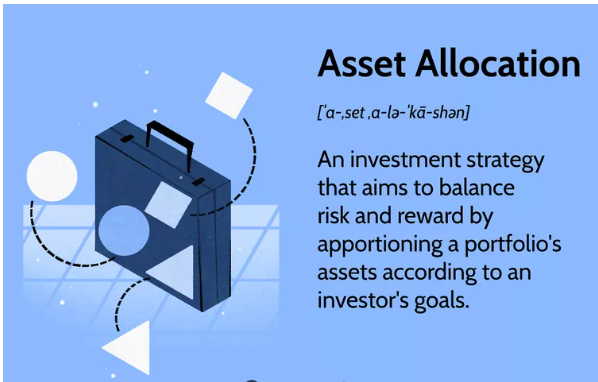Asset Allocation: What It Is and Why It Matters
When it comes to building a strong investment portfolio, picking the right stocks or funds isn’t enough. One of the most important (and often overlooked) factors in your long-term success is asset allocation.
In simple terms, asset allocation is how you divide your money across different types of investments and it can make a bigger difference than any single stock pick.
In this post, we’ll explain what asset allocation is, why it’s so important, and how you can find the right mix for your goals.
What Is Asset Allocation?
Asset assignment is the strategy of spreading your investments across various asset classes, such as:
-
Stocks (Equities) – Higher risk, higher potential returns
-
Bonds (Fixed Income) – Lower risk, stable returns
-
Cash or Cash Equivalents – Low risk, very liquid, low returns
-
Real Estate – Tangible assets with rental or appreciation potential
-
Commodities – Gold, oil, etc., used for inflation protection
Each asset class performs differently under various economic conditions. By diversifying across multiple classes, you reduce the risk of your entire portfolio losing value at the same time.
Why Asset assignment Matters
1. Manages Risk
Different assets react differently to market conditions. When stocks are down, bonds may hold steady or rise. Spreading your money across asset types reduces volatility.
2. Boosts Returns Over Time
A well-diversified portfolio can generate more consistent returns, even if individual assets fluctuate.
3. Helps You Stay on Track
Having a clear asset assignment strategy helps you avoid emotional decisions during market ups and downs. You’ll be more likely to stick with your plan.
4. Tailors to Your Goals and Risk Tolerance
Your mix of assets should reflect your:
-
Age
-
Investment timeline
-
Financial goals
-
Comfort with risk
🧓 Examples of Asset Allocation by Age
Here’s a general guide based on age and risk tolerance:
| Age Group | Risk Profile | Sample Allocation (Stocks/Bonds/Cash) |
|---|---|---|
| 20s–30s | Aggressive | 80% / 15% / 5% |
| 40s–50s | Balanced | 60% / 30% / 10% |
| 60+ | Conservative | 40% / 50% / 10% |
📝 Rule of Thumb: Subtract your age from 100 to determine your ideal stock allocation. For example, if you’re 30: 100 – 30 = 70% in stocks.
🔁 Rebalancing: Keeping Your Allocation On Track
Over time, your investments will grow at different rates, throwing your original allocation off balance. For example, if stocks perform well, you may become too heavily invested in them.
Rebalancing involves periodically adjusting your portfolio back to your target allocation—either by:
-
Selling assets that have grown too large
-
Buying more of the underweight assets
-
Redirecting new contributions
Most investors rebalance annually or semi-annually.
🛠️ Tools to Help You Allocate Assets
If you’re not sure how to build your allocation, try using:
-
Robo-advisors (e.g., Betterment, Wealthfront, Risevest, Bamboo)
-
Target-date funds (adjust automatically as you age)
-
Online asset allocation calculators
These tools can recommend a mix based on your age, goals, and risk profile.
🚫 Common Mistakes to Avoid
-
Ignoring bonds completely – Even aggressive investors should hold some safer assets.
-
Putting all your money in one asset class – That’s a recipe for big losses during a downturn.
-
Forgetting to rebalance – Your risk level can creep up without you noticing.
-
Chasing performance – Last year’s winners aren’t guaranteed to win again.
🏁 Final Thoughts
Asset allocation is the foundation of any smart investment strategy. It’s not about predicting which asset will win—it’s about building a resilient portfolio that can grow steadily, weather market storms, and help you reach your long-term goals.


